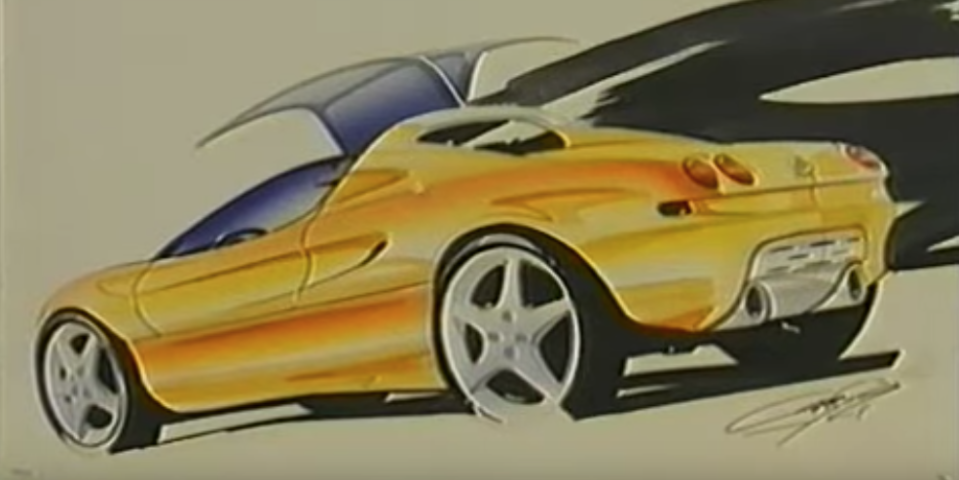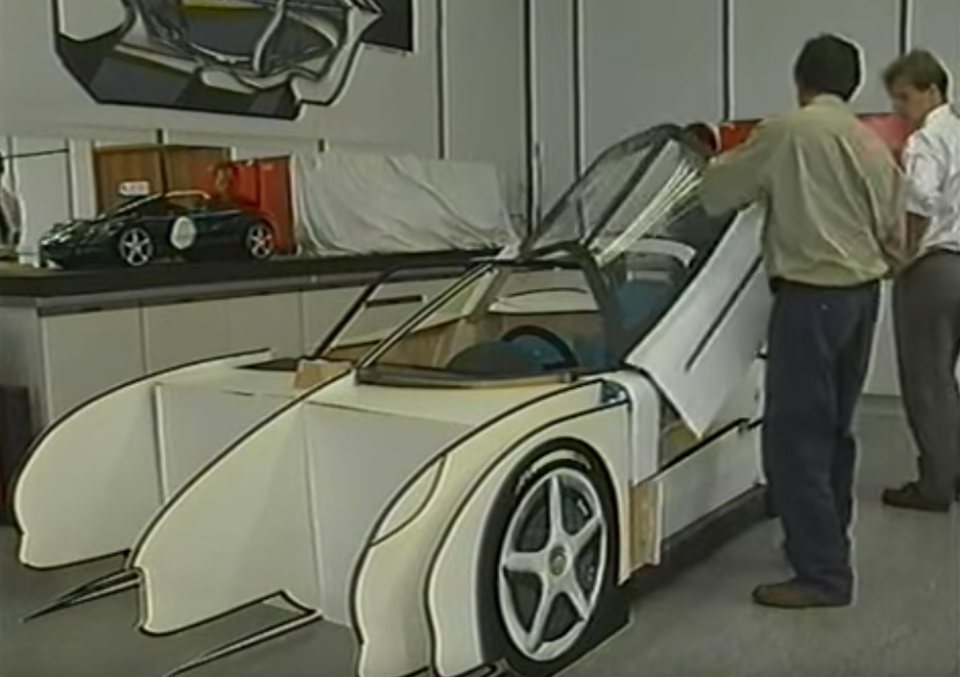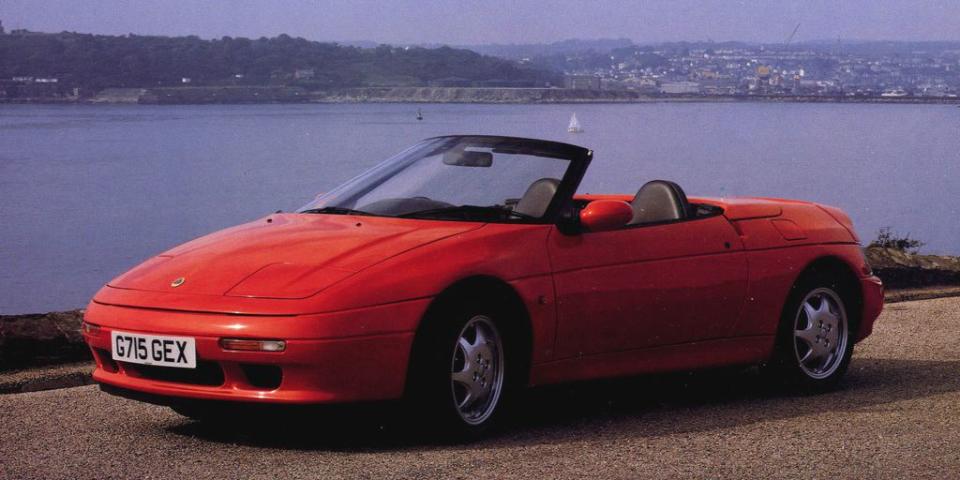The Lotus Elise Almost Had Gullwing Doors

Squeezing into a Lotus Elise is not an easy task. Not only is the car low, its door sills are tall and wide, which is great for structural rigidity, but bad for ingress and egress, leaving a tiny entryway when the roof is installed. The Elise could've been a lot easier to get in and out of, however. On YouTube, there's a 1990s documentary on the making of the original Elise, and it reveals that many at Lotus wanted the car to have gullwing doors.

This was inspired by the Mercedes 300SL "Gullwing," which, like the Elise, had high, wide doorsills for increased rigidity. Hinging doors on the roof of a car, as with the 300SL, creates larger entryways, making it easier to get in and out. Lotus seems to have experimented with McLaren F1-esque dihedral doors, too, which hinge at the base of the A-pillar and the roof, essentially serving the same function as gullwing doors.
At 18:40 in the documentary, there's footage of a May 1994 meeting with a member each from the design and engineering teams, and production bosses. The designer and engineer advocate for these cool, functional doors, but those on the production side worry that they'd be too complicated, and too expensive to make a reality.

With the financial backing of GM-which bought Lotus in 1986-the British company spent over $58 million developing the front-wheel drive 1990 Elan as a new entry-level model. But the car was a disaster. It was too expensive to manufacture, and cost almost $20,000 more than the then-new Mazda Miata, a car which got a lot closer to the ethos of the original Elan.
The Elan was unceremoniously killed in 1992, and in 1993, GM sold Lotus to Italian entrepreneur Romano Artioli, of Bugatti EB110 fame. With the Elan out of production sooner than planned, Lotus needed to get a new entry-level model to market as quickly as possible, and on a tight budget. So, complex parts, like gullwing doors, weren't feasible.

But don't think that Lotus totally cheapened out on what became the Elise–its aluminum monocoque chassis was revolutionary, and it made the basis for the brilliant cars the company makes today. Even if its design makes getting in and out hard.
The whole documentary is 2.5 hours long, and I plan on watching the whole thing. You can too, and if you're just interested in the talk of gullwing doors, skip to 18:14.
Click here to watch the above video on YouTube
You Might Also Like

 Yahoo Autos
Yahoo Autos 